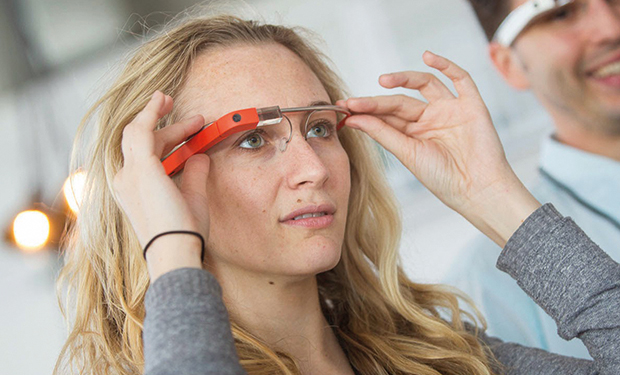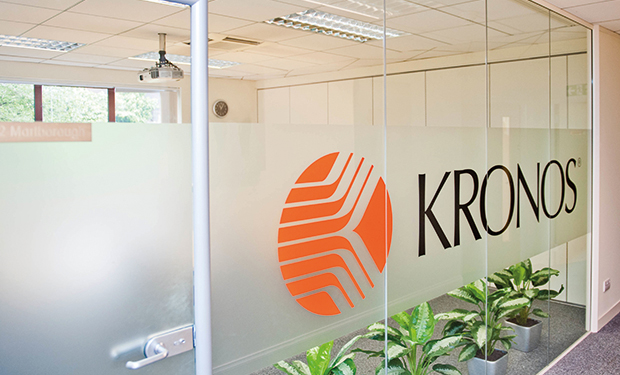Smartwatches, health monitors, pedometers and activity trackers are all part of the emerging armoury of wearable technology, but can they really help to improve employee wellbeing?

If you read nothing else, read this…
- Wearable technology can enable staff to measure their daily activity levels and pulse rates and manage their health risks.
- Wearable devices can capture vast amounts of biometric data.
- Concerns about data protection could hamper market growth.
The list of wearable technology is long and growing. Gadgets include the Fitbit, the Jawbone, Samsung Gear, the Garmin Forerunner 620, Google Glass and the Microsoft Band, with the Apple Watch expected to be launched in 2015.
Other wearables are available from relatively unknown developers, too.
For example, Pip is a device produced by Galvanic with Trinity College Dublin that can measure sweat and electro-dermal activity associated with stress levels. It enables employees to play a number of games, including Relax and Race, to help manage their anxiety levels.
Meanwhile, a headband called Muse, designed in Canada by InteraXon, can track real-time brain activity on a smartphone or tablet to help employees practise mindfulness.
Drivers of wearable technology take-up
Recent research by The Workforce Institute at Kronos, published in October, surveyed more than 9,000 people across eight countries and found that 73% believe wearable technology could benefit the workplace, such as through increased staff efficiency, productivity and safety.
Employers’ growing desire to support employee health and wellbeing, and a shift in the way they deliver this , has also been driving the take-up of wearable devices in the workplace and this is expected to continue in the near future.
For example, organisations have long been using mobile devices as a means to introduce healthcare apps with which employees can monitor their activity levels and weight, and as a tool to communicate their benefits package.
Dr Paul Zollinger-Read, chief medical officer at Bupa, says: “Healthcare is now moving out of its traditional locations and is getting up close and personal. Staff will be able to understand what their lifetime risks are and how their behaviours are affecting those risks. These tools will also help employees to manage their own health and wellbeing, including reducing the onset of diseases such as diabetes.”
Real-time data generation can help reduce risk
Wearable devices can capture vast amounts of biometric data, which can be displayed in simple, visual and practical terms.
But perhaps the biggest attraction of wearable technology for employers is its ability to generate real-time data , such as employees’ activity levels and sleep patterns, which can help organisations get to grips with the drivers of poor health in their workplace and, ultimately, reduce staff health risks.
Ian McKenna, managing director of the Finance and Technology Research Centre, says: “It is important for employers to articulate to staff the benefits of sharing data. Data usage will evolve a lot quicker than people expect, and wearables will create significant change.”
EMIS Group’s smartphone app, Patient Access, is a case in point. Employees can use it to update their medical records with health and fitness data.
Dr Shaun O’Hanlon, chief clinical officer at EMIS Group, which holds more 39 million patients’ medical records, says: “The visibility of data to healthcare practitioners enables employers and GPs to understand more about their employees. It enables them to make better decisions and create care plans for the employee, which could include targets that can be measured and informed by wearable devices.”
Demonstrating a return on investmen t
Access to employee health data could bolster benefits professionals’ business case for a workplace wellbeing programme , for which it can be notoriously difficult to secure management buy-in. Benefits professionals can use this data to demonstrate the workplace health risks present in the organisation and, importantly, the return on investment in reducing these.
Martyn Anwyl, head of health and productivity at Buck Consultants at Xerox, says: “Wearables will be able to provide employers with metrics, which will provide data that can argue for the success of a wellbeing programme. For programmes that are not seeing a positive result, the data will be vital to focus and fine-tune the specific components.”
Data protection concerns
Concerns about data protection could hinder the growth of the wearable technology market , as well raise fears that some employers may opt to use data to monitor workforce activity rather than use it for workforce health benefits.
But these concerns are thought to be minimal, particularly among younger staff.
Joyce Maroney, director at The Workforce Institute at Kronos, says: “Younger employees have a growing acceptance of technology, but they will expect employers to pay for the use of devices if they are made to wear them for work.”
So, for now at least, the positives of wearable technology appear to far outweigh any negatives.
Health gadgets and the transformation of workplace health

You don’t need to be a healthcare aficionado to recognise the change that is happening in the health arena.
Two years ago, buying a Fitbit, Jawbone or similar device was confined to the internet. Today, walk into any electrical retailer and these gadgets are on prominent display.
The iPhone 6 now plots your stair walking, the Pebble sits inside your shoe and the Apple Watch will bring health and wellbeing to the masses.
Fewer people smoke, but many of us are touched by cancer or chronic ill-health. The importance of good health is rising in our consciousness as time goes by.
This technology and a changing landscape open up exciting possibilities for better workplace health.
Up to this point, the alreadyhealth-conscious have been raving about these health gadgets . But if employers are to maximise attendance and productivity and the wider population is to get healthy, the real need is to reach those who are not proactively managing their health and who are at most risk long-term.
Health apps will deliver health advice
Health apps and the Apple Watch will deliver health advice to thousands of people not yet touched by the health gadget revolution. Personal health headlines on these devices, combined with parallel engaging employer messaging, should have the potential to transform workplace health.
I am no fitness fanatic. The ’be healthy’ mantra can be a bit much at times for most of us who are trying to juggle work, family and busy lives. But over the last year, I have walked an amazing four million steps. That sounds like a lot, but in reality it has just been achieved by wearing a Jawbone and using it to ‘nudge’ me to watch my activity levels each day.
As mobile health apps become omnipresent, that potential to be steered towards getting more active can surely only grow.
Jackie Buttery is a reward and employee benefits consultant
Kronos staff can earn reward by using wearable technology

Workforce management solutions organisation Kronos operates a number of policies across its global organisation to enable staff to engage with its wellbeing programme, including the offer of rewards for staff using wearable technology.
These rewards include lower insurance premiums for US-based staff and wellness prizes, which could include wearable devices themselves.
Staff simply have to upload their recent activity from their devices to the organisation’s wellness portal, where each employee has a personalised profile to accumulate the points required for rewards.
Greater engagement
The policy has resulted in greater employee engagement in Kronos’s health and wellbeing programme .
Neil Pickering, director at Kronos UK, says: “By encouraging and incentivising employees to exercise more to earn points, it enables them to keep healthy on their terms and gain rewards in the process.
“Since we allowed employees to use wearable devices, we have had greater engagement from staff, and employees are now more conscious about their health. We believe wearable technology will take off in the workplace.”
Walking programme
Kronos has introduced a global walking programme to put its wearable devices to good use. Each week, the organisation sets a weekly step goal for staff, which is monitored by their devices.
Pickering adds: “Our entire executive team is currently testing health and wellness devices to see how we can improve our programme .
“We are also looking to example other areas where wearable technology could be used in the workplace to improve safety, productivity, compliance and collaboration.”
Great article
Appreciate you sharing, great blog.Thanks Again. Cool.
Major thanks for the article.Really looking forward to read more. Will read on…